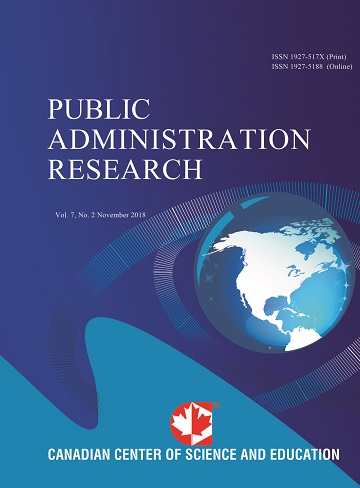Measuring the Impact of Student Background Checks on Reducing Crime in Higher Education
- Stephanie Hughes
- Teressa L. Elliott
- Margaret Myers
Abstract
There is general agreement in the literature that student-on-student crime accounts for the overwhelming majority of crimes committed on campus in the United States (Dickerson, 2008). Background checks on students as a requirement of admission is one tool that may prove effective in reducing crime on campus. So far only one state, North Carolina, has enacted a modified version of such a requirement for admission to their public institutions of higher education. Specifically, North Carolina state schools have implemented background checks on students who first self-disclose to either criminal or disciplinary violations as part of the application process. The actual size of this opt-in group is not known, but the opportunity to assess the effectiveness of the first state-wide initiative to background check students at the point of admission is the motivation for this study. This preliminary study uses the data gathered under the reporting requirements of the Clery Act to assess the impact of student background checks on the reported level of crime in the state schools in North Carolina. The results preliminarily suggest that the implementation of a modified student background check policy, requiring prior self-disclosure to a criminal or disciplinary violation, as a requirement to run a background check, has not contributed to a reduction in the total number of criminal activities on those campuses as reported in the Clery data. Given the limited number of schools assessed, the lack of information about how many students opted in to the disclosure and the lack of a comprehensive application of the background check policy on all admitted students, much more research needs to be done in this area before a strong causal argument can be made that student background check practices do not contribute to observed reductions in campus crime as measured by the number of Clery Act reports for the universities included in this research.- Full Text:
 PDF
PDF
- DOI:10.5539/par.v3n2p121
Journal Metrics
h-index (2017): 7
i10-index (2017): 6
h5-index (2017): 7
h5-median (2017): 13
Index
- CNKI Scholar
- COPAC
- CrossRef
- DTU Library
- EBSCOhost
- EuroPub Database
- Excellence in Research for Australia (ERA)
- Genamics JournalSeek
- Ghent University Library
- Google Scholar
- Harvard Library
- Infotrieve
- Jisc Library Hub Discover
- LOCKSS
- Mir@bel
- Norwegian Centre for Research Data (NSD)
- Open J-Gate
- PKP Open Archives Harvester
- Publons
- ROAD
- Scilit
- SHERPA/RoMEO
- Stanford Libraries
- Ulrich's
- UniCat
- Universe Digital Library
- UoS Library
- WorldCat
Contact
- Gabriel TaiEditorial Assistant
- par@ccsenet.org
